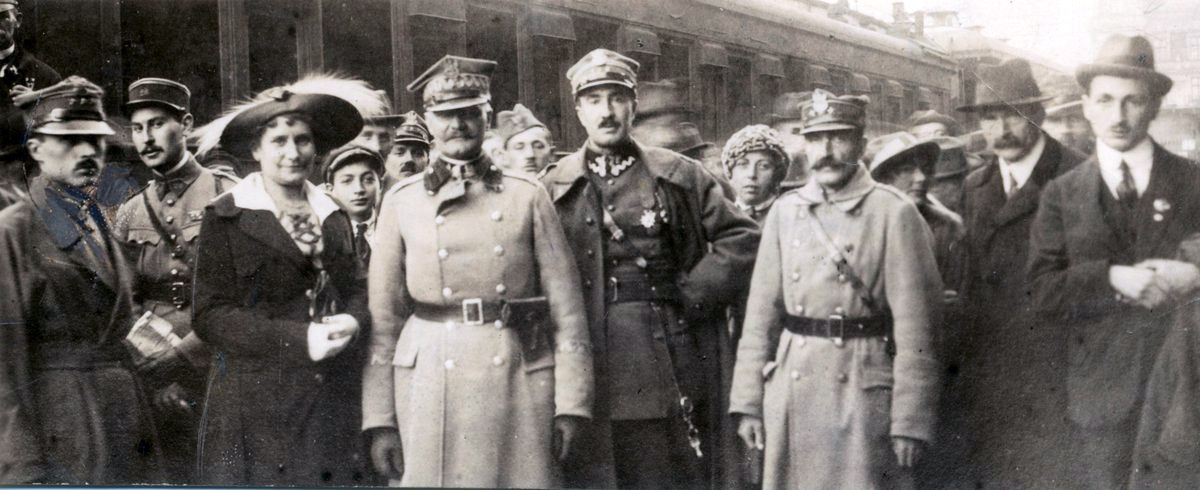The March Constitution was the crowning of an important stage in the building of the Second Republic. It proved the maturity of the young state and strengthened Poland’s authority in the international arena. Its articles indicate a tendency to use solutions adopted in Western democracies as well as to draw on the legal traditions of the Polish-Lithuanian Commonwealth, affirming individual freedom in the democracy of the nobility – says Prof. Janusz Odziemkowski.
Can one regard the March Constitution as a result of a compromise over political divisions?
Yes. It was a product of an agreement between all political groups represented in the parliament. Work on the constitution lasted 15 months, which is a record time considering Poland’s situation at that time. The Polish State was reborn after 123 years of captivity and political absence. It had to be ‘sewn together’ from the three partitions into a single state organism, and laws, education, administration and so on had to be created from scratch. The country was completely destroyed by the Great War, whose fronts moved through Polish territory several times.
But at least with the end of the World War the fighting stopped…
Unfortunately, it did not. For the following two years we had to fight a hard war, allocating scarce budgetary resources not to rebuild the country, but to the army. Already in November 1918, the Bolsheviks decided to transform Poland into a republic of councils, set up the Polish Revolutionary Committee, and in December the Red Army launched Operation Vistula, which was to take it to the former western borders of the tsarist empire. In this situation, war was inevitable, and defeat meant not only the liquidation of independent Poland, but the annihilation of the Polish elite. At the same time, Berlin was making plans to strike at the nascent Polish state from the western border, even taking into account the risk of a French offensive.
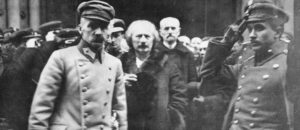
In such an atmosphere and under such threats, work on the constitution was carried out and fierce disputes about its form were fought. When it came to voting, however, the disputes died down. The reason of state prevailed. Poland urgently needed a constitution, so the Right and the Left abandoned some of their demands. The constitution was adopted in a show of unity, without a vote count. It can be said that the beautiful spirit of Polish parliamentarism from what is called the ‘golden age’ of the Polish-Lithuanian Commonwealth was victorious on that day. In pre-partition Poland, it sometimes happened that Members of Parliament who had received instructions from their constituents to vote against expected Sejm resolutions would leave the room before the vote so as not to use their opposition to block resolutions that the king and all MPs considered useful for the state.
What difficulties did members of the Legislative Sejm have to face?
The basic difficulty arose from the fact that five generations of Poles had lived, received education and gained experience in three states that partitioned Poland with different legal, educational and political systems. This must have resulted in a different view of the state and the way it functions. In fact, there were three, or even four ‘Polish societies’, given tsarist Russia’s vicious suppression of Polishness in territories east of the Bug and Niemen rivers. Although they felt a strong bond of common traditions, language and culture, they remained strongly differentiated in their views, mentality and outlook on the state, or citizens’ duties and rights. Everyone wanted an independent, united homeland, but when it came to organising the state, disputes arose almost immediately. The parliament was the representation of the nation and reflected all the divisions and differences within it. That was compounded by the ideological divisions and party disputes normal in a democracy.
Another challenge was the lack of experience of a large proportion of MPs as regards the functioning and conducting political discourse in a democratic system with the exception of the few Polish MPs who had served in the parliament of the Second Reich and those from the former Austrian-partitioned section of the country. However, three quarters of Poland’s territory consisted of the former Russian-controlled part of the country, where it was difficult to speak of any experience with democracy. Such a diverse national assembly had to decide about questions of fundamental importance for the constitutional provisions, such as the competences of parliament, its shape (a unicameral one or one with two chambers?) and the method of its election, the competences of the Head of State, and many others.
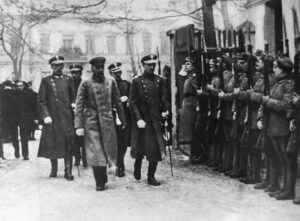
What influence did the course of the Polish-Bolshevik war have on the final shape of the constitution?
The war, engaging the parliament’s attention, must have had an inhibiting effect on the pace of work on the constitution. Moreover, there was an ongoing dispute between the supporters of incorporating part of the Byelorussian and Ukrainian territories into the Polish state – that solution was advocated mainly by the National Democracy – and the federalists who supported Józef Piłsudski’s idea of creating an independent Belarus and independent Ukraine. As regards Piłsudski’s vision, these two countries, together with Poland and other countries that had emerged from the ruins of the tsarist empire and were under threat from the Bolsheviks, were to form a federation with a common policy towards Russia, and with their potential to create an effective barrier against the Bolshevik invasion.
Why did the federation project ultimately fail?
The idea did not gain support of the small Baltic states, most Ukrainians were hostile or distrustful and the Entente powers were also opposed. It came too soon, ahead of its time. The vicissitudes of war with Bolshevik Russia showed that Poland was capable of defending its independence, but had neither the political support nor sufficient forces needed to implement the notion of federation. All that had an impact on the work on the constitution.
Are we able to say how Józef Piłsudski envisaged the Second Republic’s political system?
Indeed. He saw Poland as a republic based on the models developed by Western parliamentary democracies. He regarded economic and social reforms modelled on Western ones as a necessary condition for strengthening the state and making it a modern country. On the other hand, he was against a mechanical adoption of foreign models; he believed that they should be adjusted to Polish conditions and the Poles’ mentality.
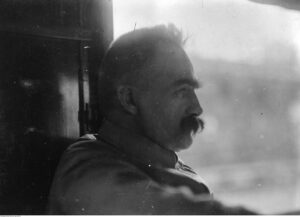
Poland was faced with various problems, among which the unification of laws came to the fore.
True, the unification of laws and regulations was the most difficult task for Poland. None of the states newly established after the World War had experienced similar difficulties on such a scale. In most cases, existing laws were extended to the whole territory of the country, with new ones added at most. In Poland, however, the legal systems of the three states that partitioned it were in force, while in the former Prussian-controlled part of the country there were also regulations issued by the command of the victorious Greater Poland Uprising, and in Pomerania and Upper Silesia there were German regulations defining the principles of what was called ‘economic demobilisation’ issued after the conclusion of the armistice in November 1918. One could not simply annul all that and create a legal system from scratch. Nor could one of the legal systems be extended to the entire territory of the Second Republic. They had to be combined in a skilful way so as not to harm anyone and to take into account the great diversity of the Polish territories, the differences in terms of legal and political culture, as well as huge economic disproportions – after all, there were regions matching the most developed parts of Western Europe and ones comparable to some areas in the Balkans.
Did the provisions adopted in the 1921 constitution make this task easier or more difficult?
It is difficult to answer this question unequivocally. Since the parliament was the final decision-making body, many provisions required inter-party agreement, which delayed the process of codifying the law. On the other hand, however, it forced discussions and an exchange of views. This in turn improved the quality of legislation. The result was a coherent, transparent and high-quality system. What is more, it stood the test of time. Also after 1945, the communists accepted the basic framework of law created in the Second Republic.
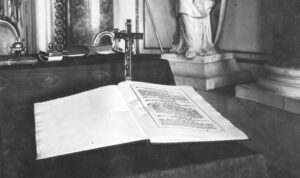
Yet, the constitution was criticised by virtually everyone. It was a compromise which did not satisfy anyone. In subsequent years, it also highlighted the increasingly sharp disputes between the parties. What did the Left expect from that act and what were the expectations of the Right?
The essence of compromise is that it does not fully satisfy anyone, but gives something to everyone. The constitution gave broad powers to the parliament and limited those of the Senate. The latter was in line with the demands of the Left. On the other hand, the limitation of presidential powers was pushed through by the Right against the demands of the Left. It was widely expected that Józef Piłsudski, who had been strongly linked with the socialist movement in the past, would become president. Piłsudski, believing that limiting his powers would make him a toothless head of state with no real influence on the course of events in the country, refused to run for that post.
The broad powers of the parliament were not in themselves a bad thing. However, they required a high level of political culture, responsibility for the state, and the ability to abandon party interests in favour of the common good. The troubles with the Sejm’s domination characterising the period from the adoption of the constitution to the coup of May 1926 stemmed, in my view, from the fact that the constitution, modelled on solutions which mature Western democracies had reached after decades of trial and error, clashed with the reality of a country in which part of society and politicians, especially those coming from the former Russian-controlled part of the country, had not yet matured to make responsible use of the freedoms and opportunities offered by the March Constitution.
Successive cabinet crises and the deteriorating political and economic situation in the country led to the May coup. What influence did the coup d’état staged by Józef Piłsudski in 1926 have on what happened with the constitution later?
The Sejm lost its influence on the formation and dismissal of the cabinet, and had limited opportunities to control the actions of the government. The March Constitution was not changed as a result of the coup, but May 1926 did give rise to ideas and actions which in the long run resulted in the April Constitution.
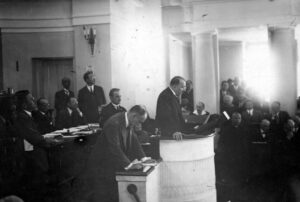
What was the ‘August Amendment’ passed by the Sejm on 2 August 1926 and what effects did it have on the political situation in the country?
Generally speaking, the executive power was strengthened and the position of parliament weakened. Among other things, the President received the right to issue decrees with the force of law. Provisions were introduced specifying the deadline by which the parliament must complete its work on the budget, which I consider to be a good thing.
The impact of the August Amendment on the political situation in the country cannot be considered in isolation from the May coup. Both of these events provoked fierce attacks on the government from the Right and the centre of the political scene – let us remember that the coup was initially supported by the Left. In the course of time, the atomised and divided Polish political scene saw the crystallisation of two clearly opposing camps: the Sanation group, which formed the Nonpartisan Bloc for Cooperation with the Government under the slogan of making the situation in the country healthier, and the centre-left opposition, which began to vigorously fight the Sanation group in the parliament and outside it, on the streets.
The provisions of the constitution were formally in force until the promulgation of a new one, i.e. the April Constitution of 1935, which abolished the act from 14 years previously. It is interesting to note that, at the end of the Second World War, the communists who began to take power in Poland adopted the March Constitution as their political basis, as the only legal one valid until the passing of what is called the ‘Small Constitution’ of 1947.
They had to accept some legal standards since they were unable to propose their own. They could hardly have been expected to take the April Constitution as a starting point, which they called, quite unjustifiably, ‘fascist’. Incidentally, while criticising various solutions of the April Constitution, it is worth mentioning that it contained a provision on the transfer of power from the President of the Republic, thanks to which after Poland’s defeat in September 1939 it was possible to legally transfer power from President Ignacy Mościcki, interned in Romania, to the new president-in-exile Władysław Raczkiewicz. The legal continuity of Poland’s existence was preserved, contradicting the propaganda of the Third Reich and the USSR that the Polish state had ceased to be.
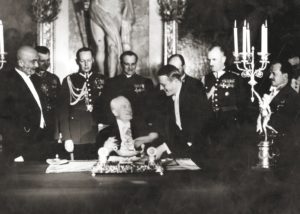
However, the legal Polish government-in-exile acted on the basis of the 1935 constitution until 1990, that is, until the formal handover of office to Lech Wałęsa, who had been elected president in democratic elections.
Yes, because the exiled Polish authorities rightly took the view that following the September debacle President Ignacy Mościcki had legitimately, that is in compliance with Article 24 of the 1935 constitution, handed over his office to Władysław Raczkiewicz, who – again under the provisions of the April Constitution – appointed the government headed by August Zaleski. Obviously, the personnel line-up was the result of a political compromise forced by pressure from France. The government was recognised internationally yet not by the Third Reich and the Soviet Union. Without going into the details of the lawyers’ discussion, one can say that the April Constitution legitimised the Polish government in the West, testifying to the continuity of the constitutional bodies of the state. Therefore, the legal Polish government-in-exile, which the Western powers stopped recognising in 1945 as a result of the agreement with Stalin and leaving Poland in the Soviet sphere of influence, acted – fully legally – on the basis of the April Constitution.
If you had to list the advantages and disadvantages of this act of law today, one hundred years after its adoption, what would it be? What did the March Constitution give Poland?
The March Constitution was the crowning of an important stage in the building of the Second Republic. It proved the maturity of the young state and strengthened Poland’s authority in the international arena. Its articles indicate a tendency to use solutions adopted in Western democracies as well as to draw on the legal traditions of the Polish-Lithuanian Commonwealth, affirming individual freedom in the democracy of the nobility.
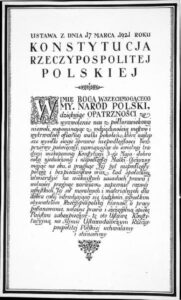
However, it is not enough to write down the values and ideas of democracy. It is necessary to know how to use them. The creators of the constitution lacked the experience that would make them reflect on how the model of political life outlined in the act would work in the realities of Poland, with its diverse and divided society, multitude of political parties and groupings, and a large proportion of national minorities that generally did not have warm feelings towards the Polish state. Not all Polish parliamentarians were properly prepared for their functions. In such conditions, a serious drawback of the constitution – despite its many advantages and thoroughly democratic nature – was the excessive extension of the Sejm’s prerogatives. With divisions and a lack of a stable majority, that made the work of the government much more difficult, and led to the widely criticised Sejm’s domination. It introduced elements of chaos and instability to the political scene. Would the young Polish democracy cope with those weaknesses? We do not know, because it was precisely them, among other things, that paved the way for the May coup, supported by a large part of society, disheartened and outraged by the chaos in the country.
Interviewer: Piotr Abryszeński – PhD, employee of the History Research Office of Institute of National Remembrance
Translation: Mikołaj Sekrecki

